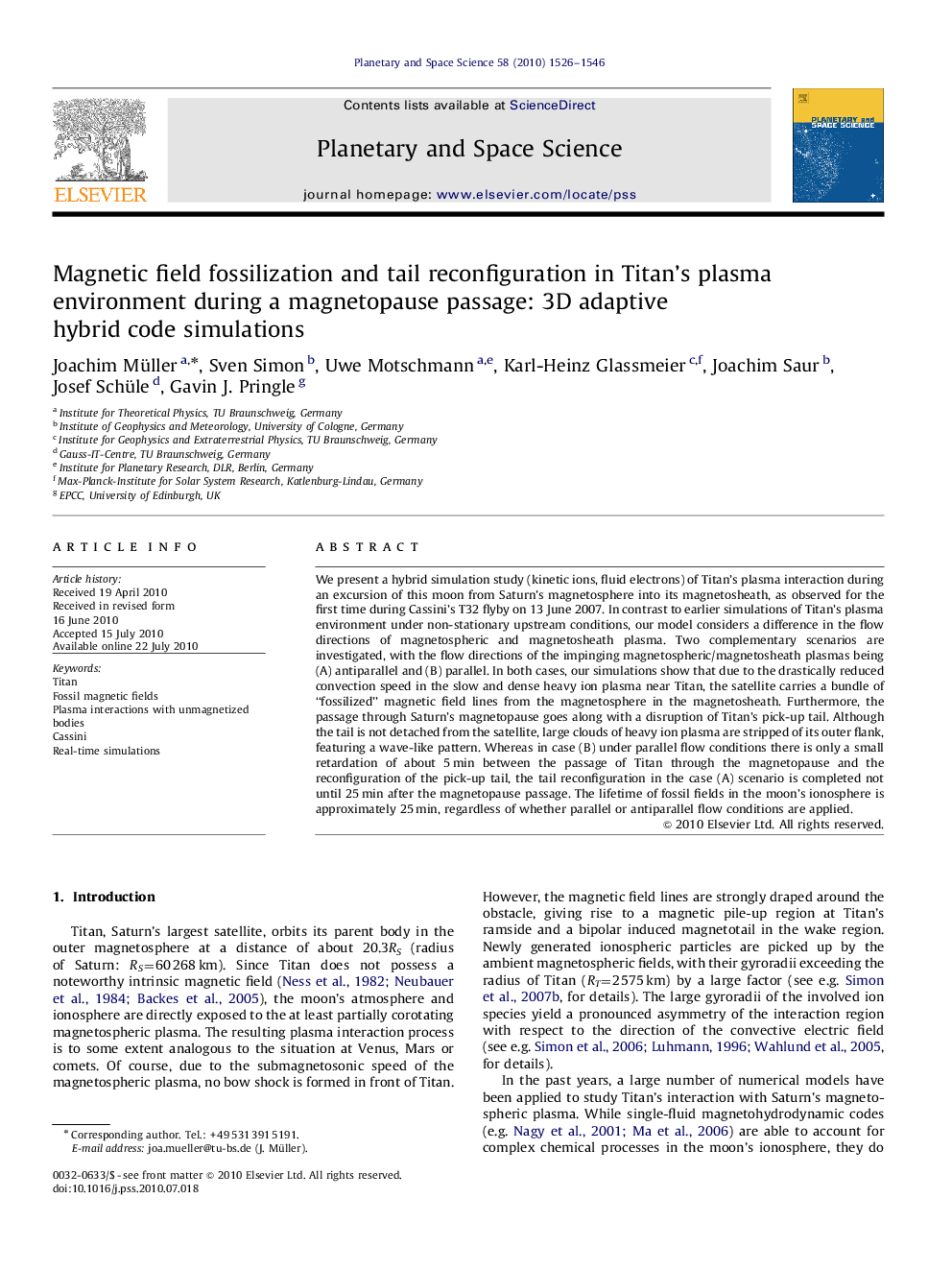| Article ID | Journal | Published Year | Pages | File Type |
|---|---|---|---|---|
| 1781772 | Planetary and Space Science | 2010 | 21 Pages |
Abstract
We present a hybrid simulation study (kinetic ions, fluid electrons) of Titan's plasma interaction during an excursion of this moon from Saturn's magnetosphere into its magnetosheath, as observed for the first time during Cassini's T32 flyby on 13 June 2007. In contrast to earlier simulations of Titan's plasma environment under non-stationary upstream conditions, our model considers a difference in the flow directions of magnetospheric and magnetosheath plasma. Two complementary scenarios are investigated, with the flow directions of the impinging magnetospheric/magnetosheath plasmas being (A) antiparallel and (B) parallel. In both cases, our simulations show that due to the drastically reduced convection speed in the slow and dense heavy ion plasma near Titan, the satellite carries a bundle of “fossilized” magnetic field lines from the magnetosphere in the magnetosheath. Furthermore, the passage through Saturn's magnetopause goes along with a disruption of Titan's pick-up tail. Although the tail is not detached from the satellite, large clouds of heavy ion plasma are stripped of its outer flank, featuring a wave-like pattern. Whereas in case (B) under parallel flow conditions there is only a small retardation of about 5Â min between the passage of Titan through the magnetopause and the reconfiguration of the pick-up tail, the tail reconfiguration in the case (A) scenario is completed not until 25Â min after the magnetopause passage. The lifetime of fossil fields in the moon's ionosphere is approximately 25Â min, regardless of whether parallel or antiparallel flow conditions are applied.
Keywords
Related Topics
Physical Sciences and Engineering
Earth and Planetary Sciences
Geophysics
Authors
Joachim Müller, Sven Simon, Uwe Motschmann, Karl-Heinz Glassmeier, Joachim Saur, Josef Schüle, Gavin J. Pringle,
